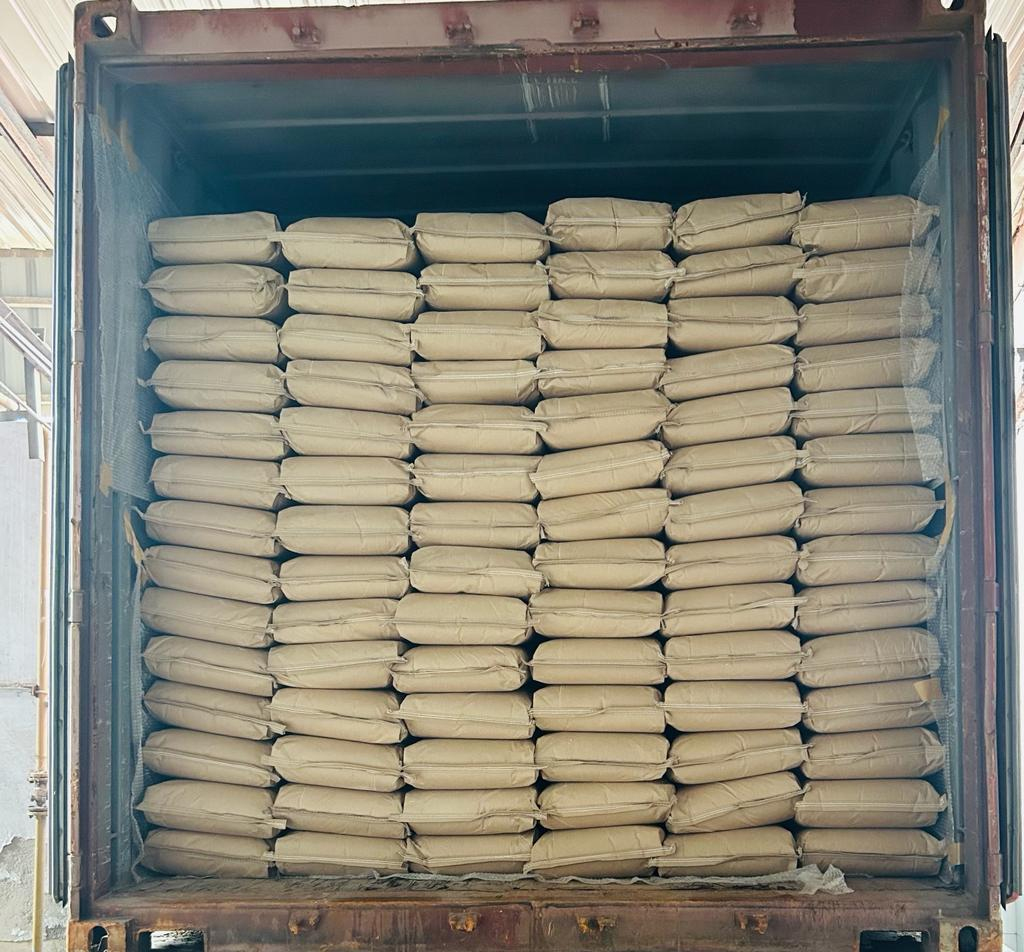Gluten Free Flours
Gluten Free Flour – The Basics
Gluten is a protein molecule primarily found in foods like wheat, barley, and rye. While gluten-free diets have become a fan favourite in the past few years, many people do not know where this preference originated from. In this blog, we shed some light on this dietary preference and hope to aid you in your journey of going gluten-free.
Why go gluten-free?
A gluten-free diet involves cutting out foods that contain this protein and is preferred by people who suffer from celiac disease, which is an autoimmune disorder. In this syndrome, the body of the affected individual recognizes gluten as a threat and hyperactivates the immune system, resulting in an attack on body’s cells. This not only destroys healthy body cells, but also affects the way their bodies absorb other nutrients.
Gluten can also be a hazard for people with wheat allergies. Apart from that, many people may also experience non-celiac gluten sensitivity, which is usually driven by the fact that gluten can be a dietary irritant and triggers uncomfortable symptoms in their gastrointestinal tracts. These symptoms include bloating, flatulence, diarrhoea and even cramps. These are general symptoms for the majority of the population and the reason why gluten-free diets have become such a norm.
How to go gluten-free?
However, following a gluten-free diet is easier said than done. Due to the omnipresence of gluten in staples like wheat, barley, rye, etc., it is difficult for people to cut down on gluten without introducing major deficiencies in their nutrition.
Whether it is roti in India, pasta in Italy, or bread in France, wheat is a staple in most households, regardless of their ethnicity and food preferences. Gluten has the ability to become a sticky, gel-like matrix when wet, giving it the name “gluten”, because it is the glue for food preparations. Hence, cutting out gluten means cutting out all potential carbohydrates from the diet.
This is not a healthy precedent to set. It can affect your metabolism and fiber intake, causing other problems. Hence, the best way to initiate and maintain a gluten-free diet is to replace your wheat flour with gluten-free flours for roti that is free of gluten but maintains the properties of gluten-containing flours.
Gluten Free Flour – WITH ENHANCED SHELF- LIFE
We also Pack Gluten Free Flours in VACUUM BAGS. This eliminates the infestation growth & also increases the Shelf life of product. We are able to provide the Flours with shelf life of 1 year.
Looking at the sensitivity of the packaging, we stuff the container at our Manufacturing unit. We Stuff 24 MT in a 40 FT Container on Pallets.


Gluten Free Flours We Manufacture
Sorghum Flour
Health Benefits of Jowar
The high nutrient composition of jowar makes it a desirable grain when it comes to good health. Here are some of the several benefits of this whole grain:
Gluten-free
Gluten is a protein component found in wheat and barley-based foods. It causes digestive problems such as bloating, pain, and stomach cramps. Jowar, a gluten-free whole grain, is considered an excellent alternative for people who suffer from ‘gluten intolerance’.
Jowar Rich in Fiber
Compared to other cereal grains like barley or rice, jowar contains a much higher concentration of fibre. A single serving contains over 12 grams, which is almost half the recommended daily intake for fibre. A high-fibre diet lowers the risk of obesity, stroke, high blood pressure, cardiac disease, diabetes, and digestive problems.
Jowar Controls Blood Sugar Levels
Jowar is a complex carbohydrate that digests slowly. As a result, it leads to stable blood sugar levels. Hence, it is a great diet choice for diabetics and people who want to lose weight.
Jowar High in Protein
100 grams of Jowar provides 11 grams of protein, which supplies the body with energy and aids in cell regeneration.
Full of Iron
Jowar contains 8.45 mg of iron in every cup. Since the iron in jowar is non-heme (difficult to absorb), pairing it with a source of Vitamin C will give you the maximum benefit.
Jowar Good for Bone Health
Because it contains high magnesium levels, jowar helps maintain calcium levels in the body (magnesium increases calcium absorption).
Packed with Vitamins, Minerals, and Micronutrients
It contains B vitamins, which help the body build new tissues and cells and potassium and phosphorus. Additionally, Jowar contains traces of zinc, copper, and over 20 micronutrients and high levels of antioxidants.
Jowar Helps Weight Loss
Jowar has a much higher concentration of dietary fibre when compared to other cereal grains. This high fibre content ensures higher satiety levels, lowering consumption by keeping hunger pangs at bay.
Therefore, the fibre content in Jowar reduces your appetite, making it the ideal whole grain option for weight loss.
Jowar Improves Digestive System
The high dietary fibre content in Jowar also helps improve digestion. The fibre is a bulking agent that helps stool pass smoothly through the digestive tract. The whole grain helps improve digestive health and helps to treat conditions like diarrhoea, bloating, stomach ache and constipation.
Jowar Improves Heart Health
The abundance of fibre in jowar helps lower LDL (or bad cholesterol) levels in the body, thus reducing the risk of a heart attack. The cholesterol-lowering properties of jowar also reduce the chances of hindered blood flow, arteriosclerosis and plaque formation.
The whole grain also contains antioxidants, apart from nutrients like magnesium, iron, and vitamins B and E. As a result, it helps avoid several cardiovascular conditions. Jowar also helps regulate plasma LDL cholesterol concentration while improving the HDL levels in the body.
Jowar Improves Energy Levels
Sorghum contains high amounts of niacin (or Vitamin B3). The B vitamin is integral in transforming food into energy usable by the body.
Niacin ensures that the energy levels in the body are consistent throughout the day rather than observing sudden spikes of energy. A rich source of niacin, a single serving of Jowar accounts for 28% of the recommended daily intake.
Jowar vs Wheat – Nutrition Value
| Jowar (100 g) | Wheat (100 g) | |
| Calories | 349 Cal | 346 Cal |
| Protein | 10.4 g | 11.8 g |
| Carbs | 72.6 g | 71.2 g |
| Fats | 1.9 g | 1.5 g |
| Fiber | 9.7 g | 12.5 g |
White Rice Flour
Gluten-Free Rice Flour
Rice flour is an excellent substitute for white wheat flour in a gluten-free diet. Different types of rice can be used in flour, but the most popular choices include white and brown rice. While both options are convenient for cooking and baking, there is a slight difference between them, which lies in processing and nutritional profile.
RICE FLOUR is an excellent addition to your gluten-free diet. It’s a tasty and 100% natural ingredient you can use to bake fresh bagels, muffins, pancakes, and or sweet desserts you can enjoy with peace of mind.
RICE FLOUR is an excellent source of carbohydrates, providing enough energy to go through the busy day at work or complete a workout. It contains only one ingredient – milled gluten-free white rice, which makes it convenient for vegans, vegetarians, and celiac disease or other gluten disorders.
White rice flour is the number one gluten-free flour you can use in various recipes. You may combine it with other gluten-free flours to get a richer texture and more enhanced flavor you’ll enjoy.


